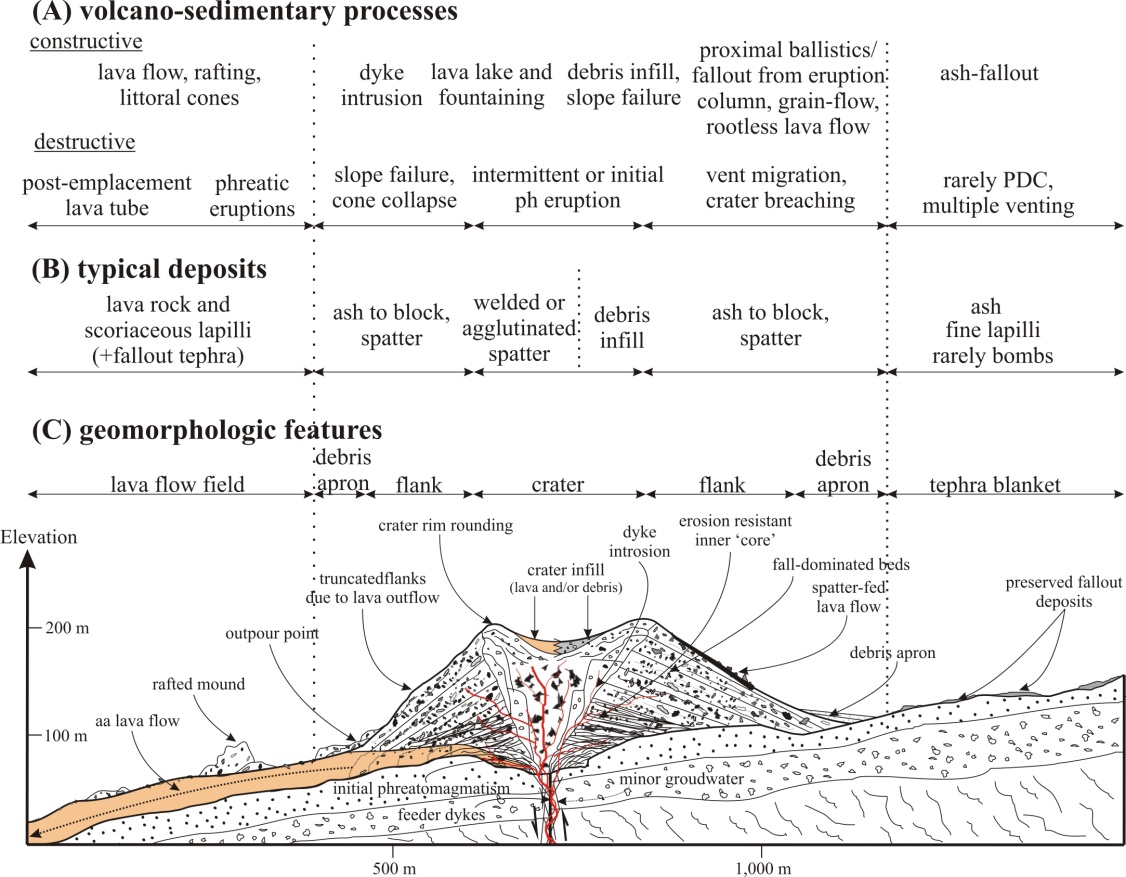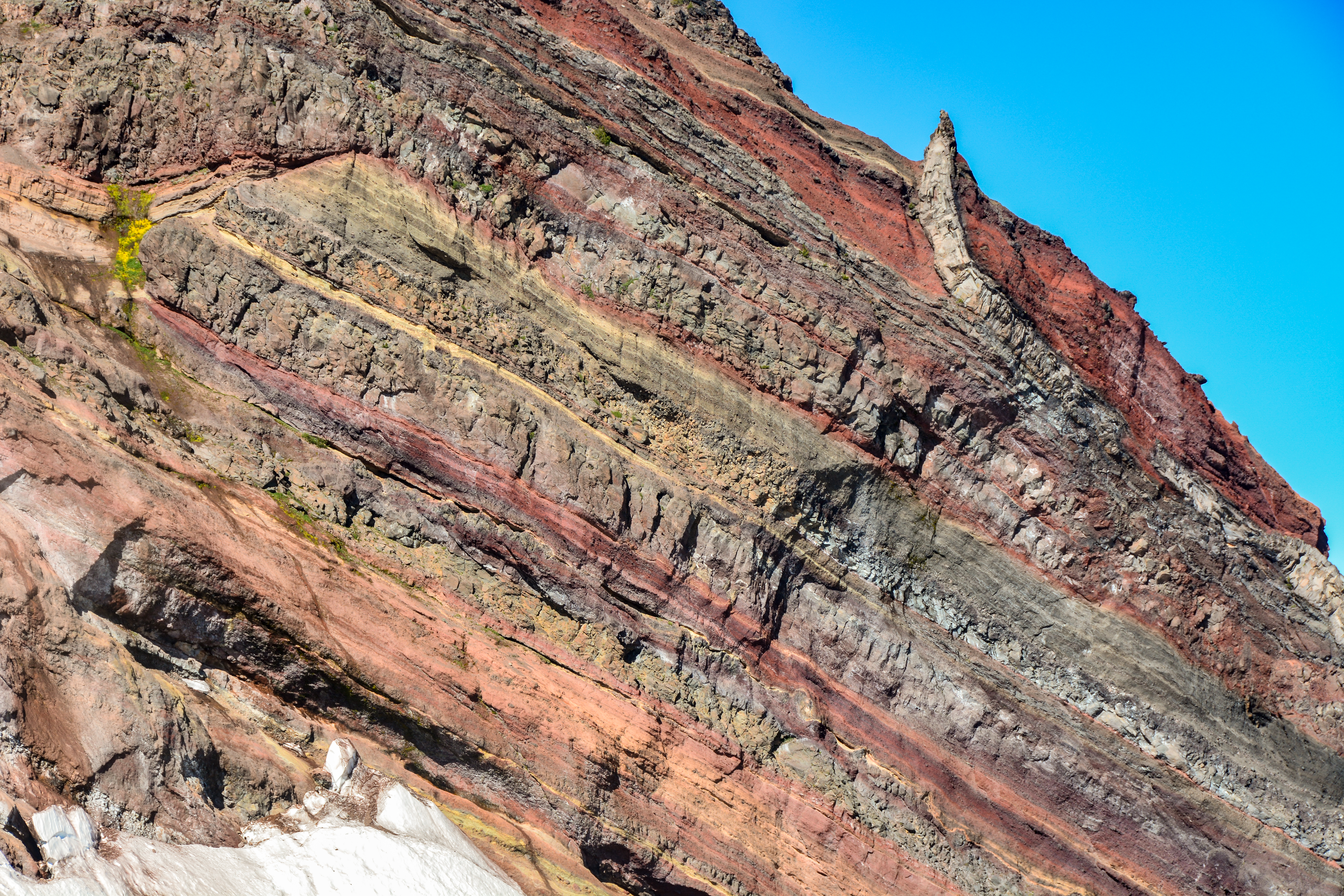|
Sangangüey
Sangangüey is an eroded stratovolcano standing 2340 meters tall in the Trans-Mexican Volcanic Belt of Mexico. The volcano is located immediately southeast of Tepic in the state of Nayarit in Mexico. There has been no confirmed historical eruptions, and the volcano is believed to be dormant; although an indigenous legend recorded the volcano erupting in 1742. The eruption is believed to be one occurring on a flank cinder cone on the volcano. Within the last 300,000 years however, the volcano has produced 45 cinder cones and lava flows Lava is molten or partially molten rock (magma) that has been expelled from the interior of a terrestrial planet (such as Earth) or a moon onto its surface. Lava may be erupted at a volcano or through a fracture in the crust, on land or unde .... References Landforms of Nayarit Stratovolcanoes of Mexico Volcanoes of Nayarit Pleistocene stratovolcanoes North American 2000 m summits {{volcano-stub ... [...More Info...] [...Related Items...] OR: [Wikipedia] [Google] [Baidu] |
Tepic
Tepic () is the capital and largest city of the western Mexico, Mexican Political divisions of Mexico, state of Nayarit, as well as the seat of the Tepic Municipality. Located in the central part of the state, it stands at an altitude of above sea level, on the banks of the Río Mololoa and the Río Tepic, approximately north-west of Guadalajara, Jalisco. Nearby are the volcanoes of San Juan, Las Navajas, and Sangangüey. Tepic is the primary urban center of this rich agricultural region; major crops include sugarcane, tobacco and citrus fruits. The city was founded in 1531 as ''Villa del Espíritu Santo de la Mayor España''. Population Indigenous population Tepic has the second-largest indigenous population in the State of Nayarit, 4,375. The most prominent groups among them are the Huichol people, Huichol or Wixárika (3,276), Cora people, Cora (527) and Purépecha (101). Religion Catholicism is the most prominent religion in Tepic with 94.2% of the population. Its ... [...More Info...] [...Related Items...] OR: [Wikipedia] [Google] [Baidu] |
Nayarit
Nayarit, officially the Free and Sovereign State of Nayarit, is one of the 31 states that, along with Mexico City, comprise the Political divisions of Mexico, Federal Entities of Mexico. It is divided in Municipalities of Nayarit, 20 municipalities and its capital city is Tepic. It is bordered by the states of Sinaloa to the northwest, Durango to the north, Zacatecas to the northeast and Jalisco to the south. To the west, Nayarit has a significant share of coastline on the Pacific Ocean, including the islands of Islas Marías, Marías and Islas Tres Marietas, Marietas. The beaches of San Blas, Nayarit, San Blas and the so-called "Riviera Nayarit" are popular with tourists and Snowbird (person), snowbirds. Besides tourism, the economy of the state is based mainly on agriculture and fishing. It is also one of two states where the tarantula species ''Brachypelma klaasi'' is found, the other being Jalisco. Home to Uto-Aztecan languages, Uto-Aztecan indigenous peoples such as the Hu ... [...More Info...] [...Related Items...] OR: [Wikipedia] [Google] [Baidu] |
Mexico
Mexico, officially the United Mexican States, is a country in North America. It is the northernmost country in Latin America, and borders the United States to the north, and Guatemala and Belize to the southeast; while having maritime boundary, maritime boundaries with the Pacific Ocean to the west, the Caribbean Sea to the southeast, and the Gulf of Mexico to the east. Mexico covers 1,972,550 km2 (761,610 sq mi), and is the List of countries by area, thirteenth-largest country in the world by land area. With a population exceeding 130 million, Mexico is the List of countries by population, tenth-most populous country in the world and is home to the Hispanophone#Countries, largest number of native Spanish speakers. Mexico City is the capital and List of cities in Mexico, largest city, which ranks among the List of cities by population, most populous metropolitan areas in the world. Human presence in Mexico dates back to at least 8,000 BC. Mesoamerica, considered a cradle ... [...More Info...] [...Related Items...] OR: [Wikipedia] [Google] [Baidu] |
Trans-Mexican Volcanic Belt
The Trans-Mexican Volcanic Belt (), also known as the Transvolcanic Belt and locally as the (''Snowy Mountain Range''), is an active volcanic belt that covers central-southern Mexico. Several of its highest peaks have snow all year long, and during clear weather, they are visible to a large percentage of those who live on the many high plateaus from which these volcanoes rise. History The Trans-Mexican Volcanic Belt spans across central-southern Mexico from the Pacific Ocean to the Gulf of Mexico between 18°30'N and 21°30'N, resting on the southern edge of the North American plate. This approximately 1000 kilometer long, 90–230 km broad structure is an east–west, active, continental volcanic arc; encompassing an area of approximately 160,000 km2. Over several million years, the subduction of the Rivera Plate, Rivera and Cocos Plate, Cocos Tectonic plate, plates beneath the North American plate along the northern end of the Middle America Trench formed the Trans-Me ... [...More Info...] [...Related Items...] OR: [Wikipedia] [Google] [Baidu] |
Stratovolcano
A stratovolcano, also known as a composite volcano, is a typically conical volcano built up by many alternating layers (strata) of hardened lava and tephra. Unlike shield volcanoes, stratovolcanoes are characterized by a steep profile with a summit crater and explosive eruptions. Some have collapsed summit craters called calderas. The lava flowing from stratovolcanoes typically cools and solidifies before spreading far, due to high viscosity. The magma forming this lava is often felsic, having high to intermediate levels of silica (as in rhyolite, dacite, or andesite), with lesser amounts of less viscous mafic magma. Extensive felsic lava flows are uncommon, but can travel as far as 8 km (5 mi). The term ''composite volcano'' is used because strata are usually mixed and uneven instead of neat layers. They are among the most common types of volcanoes; more than 700 stratovolcanoes have erupted lava during the Holocene Epoch (the last 11,700 years), and many ol ... [...More Info...] [...Related Items...] OR: [Wikipedia] [Google] [Baidu] |
Volcano
A volcano is commonly defined as a vent or fissure in the crust of a planetary-mass object, such as Earth, that allows hot lava, volcanic ash, and gases to escape from a magma chamber below the surface. On Earth, volcanoes are most often found where tectonic plates are diverging or converging, and because most of Earth's plate boundaries are underwater, most volcanoes are found underwater. For example, a mid-ocean ridge, such as the Mid-Atlantic Ridge, has volcanoes caused by divergent tectonic plates whereas the Pacific Ring of Fire has volcanoes caused by convergent tectonic plates. Volcanoes resulting from divergent tectonic activity are usually non-explosive whereas those resulting from convergent tectonic activity cause violent eruptions."Mid-ocean ridge tectonics, volcanism and geomorphology." Geology 26, no. 455 (2001): 458. https://macdonald.faculty.geol.ucsb.edu/papers/Macdonald%20Mid-Ocean%20Ridge%20Tectonics.pdf Volcanoes can also form where there is str ... [...More Info...] [...Related Items...] OR: [Wikipedia] [Google] [Baidu] |
Cinder Cone
A cinder cone or scoria cone is a steep, volcanic cone, conical landform of loose pyroclastic rock, pyroclastic fragments, such as volcanic ash, clinkers, or scoria that has been built around a volcanic vent. The pyroclastic fragments are formed by explosive eruptions or lava fountains from a single, typically cylindrical, vent. As the gas-charged lava is blown violently into the air, it breaks into small fragments that solidify and fall as either cinders, clinkers, or scoria around the vent to form a cone that is often symmetrical, with slopes between 30° and 40° and a nearly circular base. Most cinder cones have a bowl-shaped volcanic crater, crater at the summit. Mechanics of eruption Cinder cones range in size from tens to hundreds of meters tall. They are composed of loose pyroclastic material (Scoria, cinder or scoria), which distinguishes them from ''spatter cones'', which are composed of agglomerated volcanic bombs. The pyroclastic material making up a cinder cone ... [...More Info...] [...Related Items...] OR: [Wikipedia] [Google] [Baidu] |
Cinder Cones
A cinder cone or scoria cone is a steep, conical landform of loose pyroclastic fragments, such as volcanic ash, clinkers, or scoria that has been built around a volcanic vent. The pyroclastic fragments are formed by explosive eruptions or lava fountains from a single, typically cylindrical, vent. As the gas-charged lava is blown violently into the air, it breaks into small fragments that solidify and fall as either cinders, clinkers, or scoria around the vent to form a cone that is often symmetrical, with slopes between 30° and 40° and a nearly circular base. Most cinder cones have a bowl-shaped crater at the summit. Mechanics of eruption Cinder cones range in size from tens to hundreds of meters tall. They are composed of loose pyroclastic material (cinder or scoria), which distinguishes them from '' spatter cones'', which are composed of agglomerated volcanic bombs. The pyroclastic material making up a cinder cone is usually basaltic to andesitic in composition. It is ... [...More Info...] [...Related Items...] OR: [Wikipedia] [Google] [Baidu] |
Lava Flows
Lava is molten or partially molten rock (magma) that has been expelled from the interior of a terrestrial planet (such as Earth) or a moon onto its surface. Lava may be erupted at a volcano or through a fracture in the crust, on land or underwater, usually at temperatures from . The volcanic rock resulting from subsequent cooling is often also called ''lava''. A lava flow is an outpouring of lava during an effusive eruption. (An explosive eruption, by contrast, produces a mixture of volcanic ash and other fragments called tephra, not lava flows.) The viscosity of most lava is about that of ketchup, roughly 10,000 to 100,000 times that of water. Even so, lava can flow great distances before cooling causes it to solidify, because lava exposed to air quickly develops a solid crust that insulates the remaining liquid lava, helping to keep it hot and inviscid enough to continue flowing. Etymology The word ''lava'' comes from Italian and is probably derived from the Latin word ... [...More Info...] [...Related Items...] OR: [Wikipedia] [Google] [Baidu] |
Landforms Of Nayarit
A landform is a land feature on the solid surface of the Earth or other planetary body. They may be natural or may be anthropogenic (caused or influenced by human activity). Landforms together make up a given terrain, and their arrangement in the landscape is known as topography. Landforms include hills, mountains, canyons, and valleys, as well as shoreline features such as bays, peninsulas, and seas, including submerged features such as mid-ocean ridges, volcanoes, and the great oceanic basins. Physical characteristics Landforms are categorized by characteristic physical attributes such as elevation, slope, orientation, structure stratification, rock exposure, and soil type. Gross physical features or landforms include intuitive elements such as berms, cliffs, hills, mounds, peninsulas, ridges, rivers, valleys, volcanoes, and numerous other structural and size-scaled (e.g. ponds vs. lakes, hills vs. mountains) elements including various kinds of inland and oceanic waterbod ... [...More Info...] [...Related Items...] OR: [Wikipedia] [Google] [Baidu] |
Stratovolcanoes Of Mexico
A stratovolcano, also known as a composite volcano, is a typically conical volcano built up by many alternating layers (strata) of hardened lava and tephra. Unlike shield volcanoes, stratovolcanoes are characterized by a steep profile with a summit crater and explosive eruptions. Some have collapsed summit craters called calderas. The lava flowing from stratovolcanoes typically cools and solidifies before spreading far, due to high viscosity. The magma forming this lava is often felsic, having high to intermediate levels of silica (as in rhyolite, dacite, or andesite), with lesser amounts of less viscous mafic magma. Extensive felsic lava flows are uncommon, but can travel as far as 8 km (5 mi). The term ''composite volcano'' is used because strata are usually mixed and uneven instead of neat layers. They are among the most common types of volcanoes; more than 700 stratovolcanoes have erupted lava during the Holocene Epoch (the last 11,700 years), and many older, now ... [...More Info...] [...Related Items...] OR: [Wikipedia] [Google] [Baidu] |







